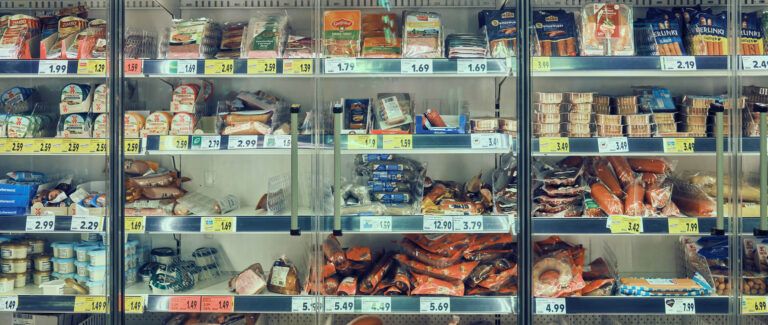Foreword
Author: Mikko Kärkkäinen, Group CEO at RELEX Solutions, D.Sc. (Tech.)
It’s easy, in retail, to get caught up in products and processes and lose sight of the fact that, ultimately, it’s all about the customer. However, we still need to source and sell products, and to do that without losing focus on the customer, we need to run efficient processes. Critical path management is a good example of a discipline that, brought to retail processes, can make the difference between success and failure.
The other day I overheard someone say ‘it’s retail, not rocket science’. But in a way retail is increasingly like rocket science. Putting a spacecraft on a distant object involves a lot of math, data and engineering. Retail is about putting a lot of merchandise from distant places on a lot of shelves at a distant date. These days, using the power of In-Memory Computing, it’s plenty of math, data and some pretty impressive engineering. Retail technology may not get you to Mars but it will get you through Christmas. Indeed, it’ll get you through the whole year, successfully and profitably.
At RELEX we specialize in demand forecasting and retail and supply chain planning. It’s a field that has advanced rapidly in recent years, especially with the exponential boost to processing power heralded by the advent of In-Memory Computing. Not only can huge volumes of data be processed but retailers are discovering that the lion’s share of their routine planning and replenishment work can be automated – allowing for their focus to be kept on keeping customers happy and meeting their needs. So how can the latest technology support you as you make your way along your critical path or planning calendar? Well, the critical path is made up of a number of steps and processes.
Early on the critical path good data and good analytics make assortment planning easier. When planning out a season, it helps to get a clear picture of the roles various lines are likely to play, whether in the central assortment or the assortment of individual stores or clusters.
In some areas of retail, promotions can account for a very significant proportion of sales and being able to analyze data from previous events is essential for effective promotion planning. It can give you what sort of promotions on what sort of items draw customers into stores. It also helps to link promotions and assortment planning and space planning… which is where planogramming comes in.
Planogramming helps significantly in assortment planning, allocation and in organizing the process of delivering and displaying stock. Matching assortment to available space and optimizing the positioning of different products according to its contribution to profit supports key parts of the critical path process.

Determining when stock hits the shelves is also critical. You can put start and finish dates into a modern retail and supply chain planning solution. You can set exceptions for items as you track them to ensure they’re ordered, shipped, landed, warehoused and shelved on time. Automated replenishment can then handle ongoing inventory transfers to stores and, eventually, ramp-downs.
Good support for allocation is also critical as we’ve outlined here and here. Keeping stock back in the DC gives you the flexibility to push it where it’s selling best. If allocation is handled successfully you should be left with minimal quantities of stock once the season or promotion is heading to a close.
However, there may be times when your initial order simply exceeds demand and the ability of your outlets to push it out at full price. You’ll almost certainly have a step in your critical path where you review sales before season’s end, consider markdowns and ramp-downs and decide whether it’s best to discount early or not. The latest technology can help you decide whether there is still the possibility to reallocate stock to stores that are performing better, whether to discount before the end of the season or in a post-season sale and what discount levels generate the biggest profits.
In all these areas making use of scenario testing, something that In-Memory Computing makes easy through its ability to crunch big data, allows planners to preview different situations. That and the ability to track orders and flag exceptions helps managers and planners map the facts on the ground to the critical path plan.
In the coming years we’ll probably see retail and supply chain planning fully integrated with critical path management.
In the coming years we’ll probably see retail and supply chain planning fully integrated with critical path management. Things are now possible that could only have been imagined five, let alone ten years ago. Advances in technology mean that the degree to which processes are integrated across businesses (and between them) and the control we’ll have, will continue to increase. What we have to look forward to is liberation from the humdrum and routine. That will make the time and space that retailers need to be creative and innovative, to focus on the customer and their needs and to build sustainable future profitability in a fast changing business landscape – and that is really exciting.
Planning and Managing the Critical Aspects of a Full Merchandising Season
Author: Charlotte Kula-Przezwanski, Partner at Columbus Consulting
Retailers could learn a lot from the Italian micro-economist Vilfredo Federico Damaso Pareto, who in 1906 came up with the principle that is sometimes known as the 80/20 rule.
‘The Pareto principle’ holds that 80% of the effects tend to come from 20% of the sample. For instance, 80% of the land in Pareto’s Italy was owned by some 20% of the population. It’s a common pattern that 80% of income is earned by 20% of the population. And a good retail rule of thumb is that 80% of revenue and activity involves just 20% of the assortment.
The Pareto principle informs a lot of our work at Columbus Consulting International (CCI). If there’s a piece of advice we offer time and again it’s to focus on the important items and make them bigger. Focusing on your top-ten selling lines could boost your sales 5-10%.
So, using an ABC classification system, A-list items might account for 80% of sales, B-list 15% and C-list just 5%. That should prompt some hard thinking about whether those C-listers deserve either their shelf space or your attention. If they don’t then you might need to think about reducing that long tail. Sometimes too much choice is bad for the retailer and bad for the customer. There’s a sweet-spot when it comes to assortment. A key part of assortment management is about seeking it out.
By the same token focus on the lines with large margins; full price items justify their shelf space better than reduced items do.
And make sure your stock is there, on the shelf. Empty shelf space equals wasted space, lost sales and dissatisfied customers. Getting the right stock in the right place at the right time is an easy concept to grasp. But it’s actually no mean feat to achieve, consistently. Thankfully we live in a world where technology is making tasks such as assortment, space planning and allocation management, for a variety of channels with different profiles and characteristics (bricks and mortar, e-commerce, international…), eminently deliverable and increasingly so.
Technology can’t, of itself, make a dysfunctional retail operation functional. However, it can bring discipline and structure and it can cater to retail’s desire to be agile and responsive by offering a high degree of visibility and control. But every retailer needs a plan and it needs processes to ensure that everyone understands the plan and they are doing their bit to make it happen.
Some people call this ‘critical path management,’ others might call it a ‘planning calendar’ or ‘corporate calendar.’

Essentially the critical path is a map of the whole process of getting to market that is built around four ‘pillars’ and their milestones:
- Planning
Strategic, merchandise and locations plans. - Buying
Assorting, clustering and creating purchase orders. - Moving
Supply chain, logistics and allocation. - Selling
In-season trading and replenishment.
Customer Centricity
Customer centricity should be uppermost in your mind. Many businesses have been far too product-centric for far too long. That is, of course, understandable. Retail is, as I’ve said, all about delivering the right products to the right place at the right time; but the customer has to be at the center of the whole exercise.
There is no room in modern retail for siloed operations or thinking. All the cross-functional teams have to be aligned to this task. And along with fresh thinking we need fresh tools in order to ensure that everyone can collaborate. Sharing technology makes collaboration possible in a way spreadsheets and traditional approaches do not. As for whether your goals and targets are the right ones it’s a good reality check, at any point, to ask yourself both ‘will the customer benefit?’ and, conversely, ‘would the customer notice?’
Secondly it’s essential to keep things simple. Your business is almost certainly complex enough as it is. Don’t introduce further complexity unnecessarily.
Thirdly the planning calendar needs to rule. It needs authority. That means it needs top level endorsement; very visible, public endorsement.
Lastly you must never forget the clock – it’s always ticking! A week lost is a week you can never get back – and the cost in terms of sales is high. The end point of the critical path is set – Easter, the first public holiday of spring, Black Friday, Christmas, and so forth. If the path doesn’t lead you to reach that point with the stock you need in the right places then it has failed.
Owning the Process
An essential part of remaining on track is to set critical milestones. Critical milestones should be carefully and strategically selected and kept to an essential minimum. These are more than way markers. They’re there to ensure you’ve completed a number of steps, such as range planning or pricing or allocation, in sufficient time to reach your ultimate goal.
However, too often we’ve seen businesses slip into a situation where people are turning up and reporting ‘we missed this deadline’. For this reason, many companies follow best practice and make sure that roles and responsibilities are clearly defined.
So each of those needs a ‘process owner’; a single accountable person, who is responsible for seeing it delivered. Milestones should all be fully agreed on by all stakeholders, stakeholders need to commit to mutual accountability, dates and deliverables should be non-negotiable.
Typically there should be a weekly meeting of stakeholders throughout the process, there should be senior people monitoring the entire critical path to ensure that milestone owners are delivering and the process leader should be monitoring progress and reporting on that at the meeting.

And remember; communication is essential. It’s the oil that keeps the gears in the machine from jamming.
Supporting tasks also need to be owned but there is a degree of ‘white space’ or ‘wiggle room’ within them and this allows a business to respond in an agile manner to changing circumstances. Supporting tasks are not just able to change but are expected to do so. The goals and the milestones remain but within the tasks there’s latitude to make adjustments in order to hit those milestones and reach those goals ‘by any reasonable means’.
For instance if a supermarket has a seasonal gifts section then getting stock on shelves in time for, say, Halloween is a non-negotiable. However if one line of novelties isn’t available then it should be possible to find another line – and this is the difference between non-negotiable critical milestones (delivering a range of products for Halloween) and more flexible supporting tasks (finding a substitute product or range if a first choice isn’t going to be available in time).
However, it’s hard to follow the planning calendar or critical path map if you don’t know what it is. We’ve found that in far too many businesses far too few people know about it. It’s like a general giving vague orders before a battle and being surprised when some people never receive the orders and others misinterpret them, the almost inevitable result being a disaster.
Working with one major UK retailer we had to print out the planning calendar in A1 and post copies in every department just to ensure that everyone knew about it.
Good software can really help impose the discipline demanded by the planning calendar or critical path map.
Good software can really help impose the discipline demanded by the planning calendar or critical path map. It’s possible to use good retail planning solutions to support the process. It’s certainly an area where we expect to see further developments in the near future as end-to-end supply chain systems embed themselves in the wider planning process.
The very best retail planning systems certainly offer essential tools to make critical path management a less challenging process and to help keep the project on track so the season’s assortment is on time, on budget and in place.
Good forecasting tools are amongst the most important. They help from the outset with the decision making process. Once the shape of a regular, seasonal or campaign assortment has been determined it becomes possible to arrive at reliable estimates of demand. Purchase orders can be made and monitored through the system, DC capacity and deliveries can be anticipated and staffing put on rota for picking.
If there are potential issues, good exception management tools can come into their own. They can alert stakeholders to delays in delivery or shortfalls, they can allocate to avoid out-of-stocks, they can run ramp-downs and track KPIs.
It’s not just about avoiding being late. It’s also about increasing speed to market, getting quicker, more agile and shortening the critical path/corporate calendar. We can’t all run an operation like Zara’s where the commissioning to design to factory to shop floor process is reportedly a mere six weeks. But shortening your critical path by just a week can put between 0.25% and 0.5% on margins. Nine months is pretty standard these days and many would like to achieve seven.
Above all, good processes and good technology are about efficiency leading to a better customer experience (for instance through optimized assortments and better availability) and a more profitable, customer-centric operation.





